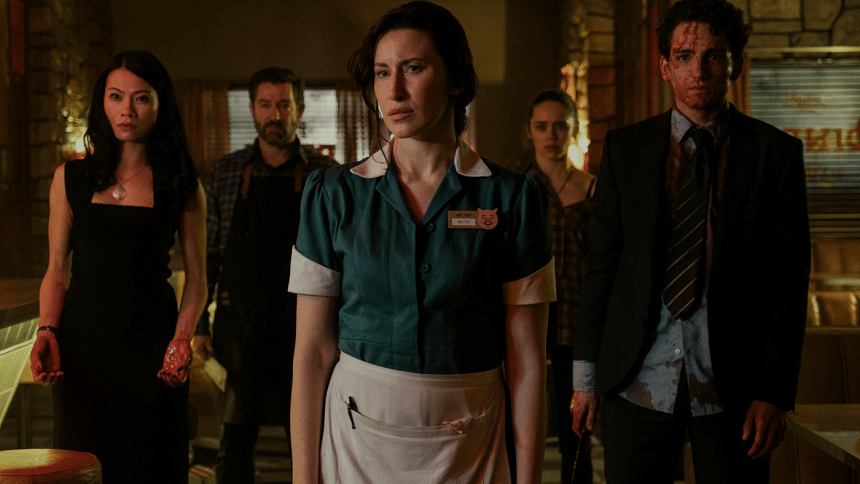The Sandman’s “24/7”: Humanising Horror

The following article contains spoilers for The Sandman.
The Sandman's Netflix release brought with it a plethora of opinions. Many fans of the original comics by Neil Gaiman were miffed by the mellowing of the comics' gruesome tone. However, it would be a misjudgement to think that the series lacks dark themes. The horror might be less raw, but not less ruthless.
In the comics, John Dee (aka Doctor Destiny) is portrayed as a supervillain set upon a path of destruction for ambiguous reasons. He is evil for the sake of being evil. The series takes care not to leave the waters as murky.
The first four episodes not only build the narrative around Morpheus (the titular Sandman) but also provide a solid background for John Dee. We learn about his past and the world of lies his mother wove for him. We see that his primary view of the world and humanity is warped as a result, and that he wishes to eradicate all lies from existence to make up for the psychological wounds he suffered due to his mother's lies.
It is with this understanding that we enter episode five, "24/7", an adaptation of the comic issue titled 24 Hours. Set in a 24-hour diner and revolving around the lives of the people in it within a 24-hour time period, this episode is nearly isolated from the larger world of The Sandman.
Through John Dee's eyes, we explore the stories of the customers and employees at the diner while they are stuck in a time loop. We act as passive witnesses as the various lies these characters tell each other and themselves, either to provide social lubrication or remain hopeful about their own prospects, get stripped away by John Dee using Morpheus's ruby.
Meanwhile, the enclosed bubble-like atmosphere of the diner allows the tension to grow till it boils over. The claustrophobic environment adds to the audience's growing anxiety about why the Sandman is not yet there to put an end to the insanity. As we slowly come to terms with the fact that a hero is not going to arrive and save these people, the hopelessness of the situation solidifies in our minds.
As the characters begin self-mutilating and ultimately killing themselves in increasingly vicious manners, The Sandman leaves behind its label of a fantasy show and embraces body horror. Accompanied by the ambient music and dark hues, the scene with all the corpses lying dead on the floor of the diner feels paradoxically; cinematic yet terrifyingly real. And the appearance of Morpheus in the end, after everyone is dead and there is no one left to save, acts as the final touch of horror.
John Dee's appearance isn't outright scary, as in the comics. However, it is knowing that a malevolent storm is brewing behind that face that makes his character even more chilling than it originally was. His goals in "24/7" are not only comprehensible, they are even desirable. After all, who doesn't want a world without lies? However, seeing the grotesque outcome of that wish renders a quality of eeriness to the story that the comics couldn't achieve.
Zaima spends much of her time fantasising about Mazikean. Send her your sympathies at [email protected]

 For all latest news, follow The Daily Star's Google News channel.
For all latest news, follow The Daily Star's Google News channel. 



Comments